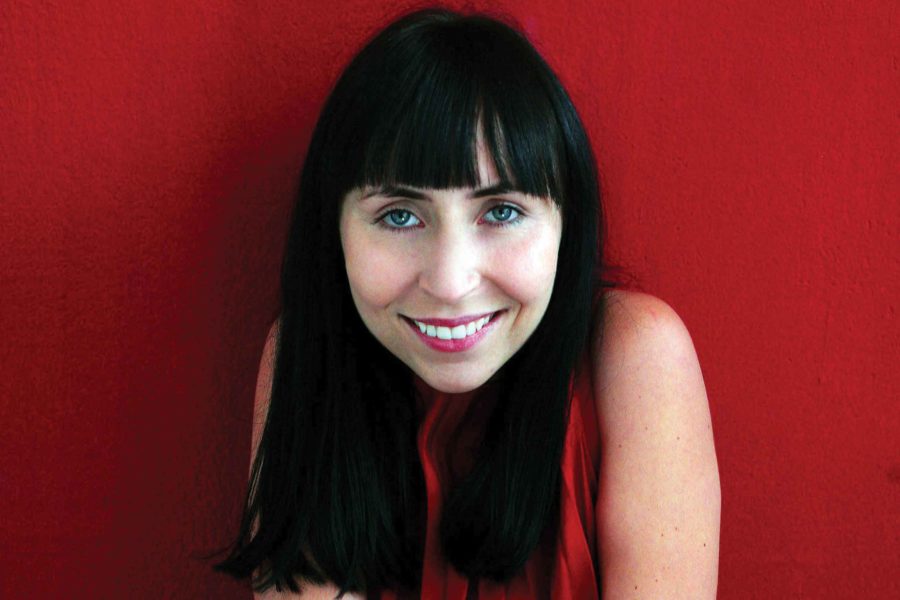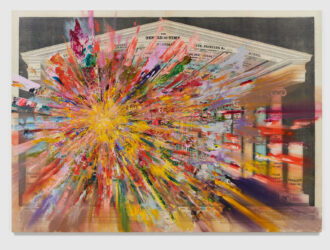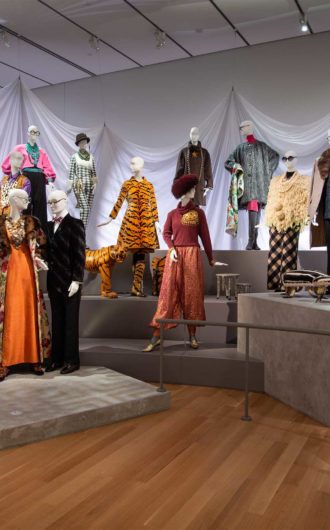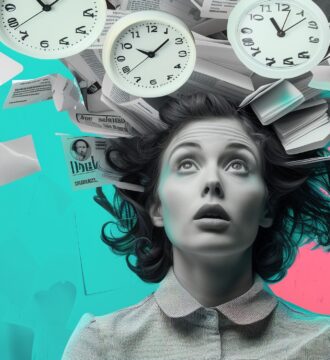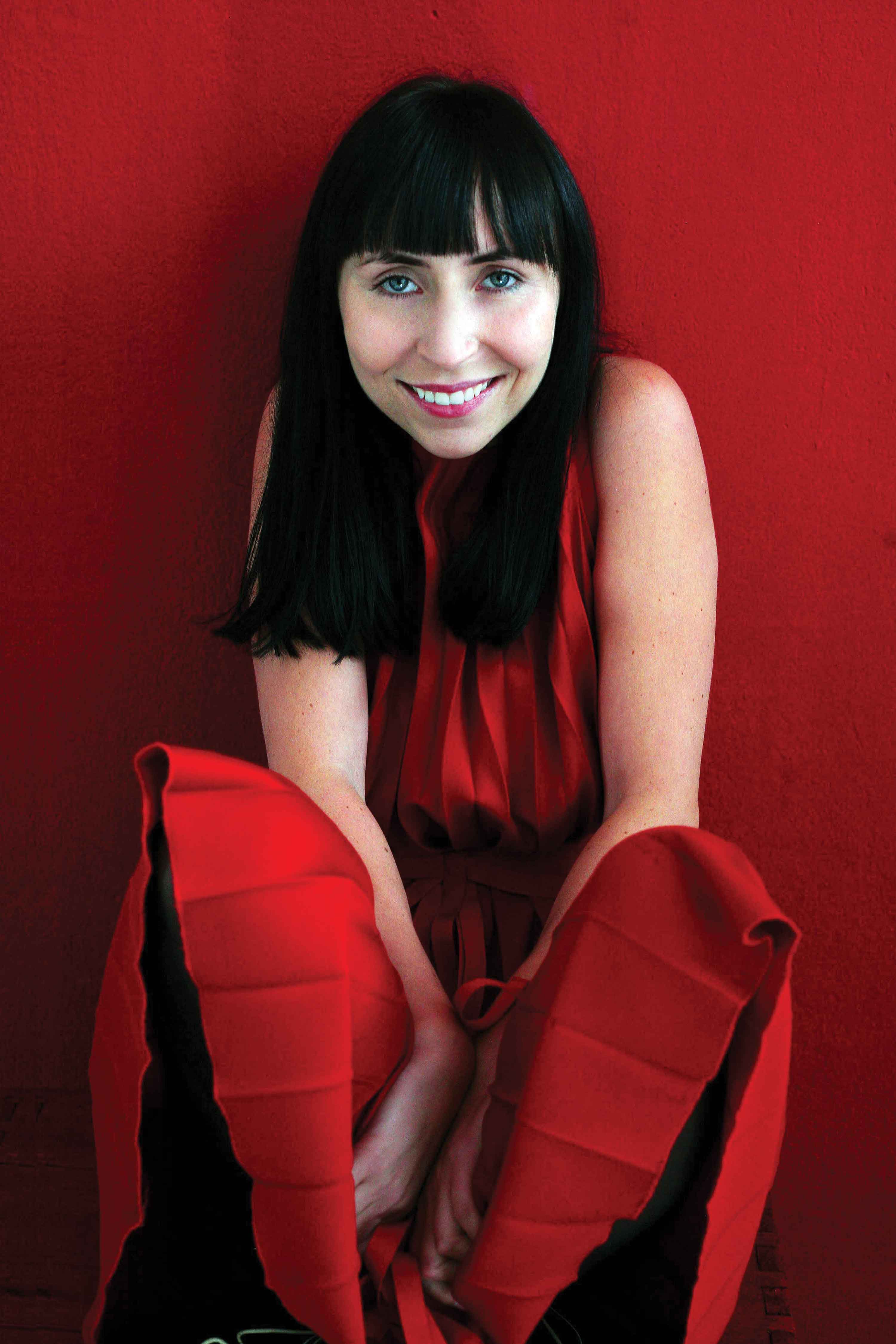
JANEK ZAMOYSKI
MIT artist Agnieszka Kurant
Defining art is a tricky proposition. Ask 10 artists to provide their own definitions, and you will get 10 singular answers. Art can touch the heart, the head or the gut. At MIT, Agnieszka Kurant, a conceptual, interdisciplinary artist, creates work that can effect all three responses.
“My works are always based on collaborations with professionals from various fields: biologists, anthropologists, engineers, computer scientists, cartographers, economists, robotics [engineers] and designers,” she says. She views her work as a catalyst for unusual cross-disciplinary dialogues, unsettling the viewers in the reality they inhabit, exploring the impact of phenomena such as automation, Artificial Intelligence, synthetic biology, and microbiome studies on the future of humanity.
Currently in residence at MIT’s Center for Art, Science & Technology, Kurant’s path to achieving an international career, first as a curator, then as an artist, is as unique as her imagination.
She hails from Poland and studied philosophy in London. She’s curated for Palais de Tokyo and New York’s International Studio & Curatorial Program, where Parisian gallery owner Yvon Lambert invited her to begin making her own work.
Kurant is currently collaborating with Boris Katz, a research scientist at MIT, exploring crossovers between nature, culture and AI.
“An initial reaction when approaching researchers in more traditional fields, is one of skepticism, with the term pseudo-science coming into play,” observes Kurant. “But, when a given project is finished, the scientists are often inspired by a completely different serendipitous approach of conscious erring, which the scientific methodology doesn’t allow for.”
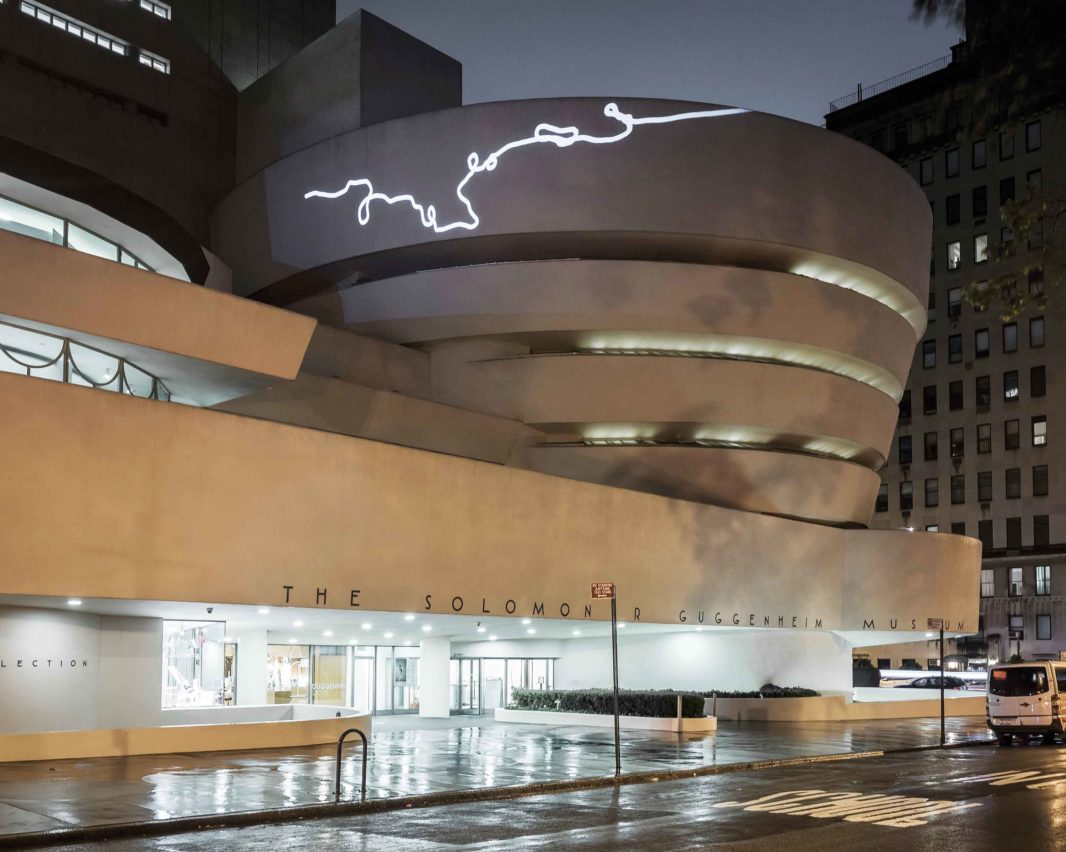
KRISTOPHER MCKAY
Kurant’s “The End of Signature” installation at the Guggenheim Museum
In 2015, New York’s Guggenheim Museum exhibited Kurant’s installation “The End of Signature,” now in its permanent collection. An unidentifiable signature, projected on the building’s exterior, is made of multiple signatures, continually re-combined and transformed through a software program, into a new projected script.
Another crowd-sourced project, “Production Line,” involves a program where people around the globe participate by drawing a computerized line without knowing other participants’ contributions. A deadline for collecting the lines is pre-determined, at which point the work can be physically produced. When sold, the fee is distributed, in equal shares, to the line drawers.
For Kurant, nothing is off limits. Endlessly enthusiastic, her inquisitive persona led to a collaboration with termites. Kurant studied their colonies, which are more like human behavior than ants or bees. She researched their collective personalities, class divisions, tasks and leisure-time activities. Next, Kurant out-sourced an idea to a colony, providing vividly colored sand, particles of gold, and broken crystals, the result of which is surprisingly organized set of similarly shaped, individually colored mounds. Admittedly pushing the process to the point of absurdity, Kurant brings us around to the question—what is art?
Where to See Art at MIT
List Visual Arts Center: MIT’s campus-set exhibition space for contemporary art in all media. 20 Ames St., Bldg. E15, Cambridge
Wiesner Student Art Gallery: Creative space on the second floor of the Stratton Student Center designed to show work by students. 84 Massachusetts Ave., Bldg. W20, Cambridge
Gallery 9: Faculty and students, researchers and alumni of the School of Architecture and Planning exhibit architectural-themed work in the Samuel Tak Lee Building. 105 Massachusetts Ave., Building 9, Cambridge,
Public Art Collection: Believe it or not, MIT holds more than 3,500 pieces of art created by internationally acclaimed artists, from Picasso to Plensa. More than 50 are installed across campus, free and open to the public for viewing, including the two most recent additions, in 2018, by artists Olafur Eliasson and Nick Mauss.



 3 min read
3 min read